How To Make Ricotta Cheese
If you have always wanted to know how to make ricotta cheese, then look no further!
Homemade Ricotta Cheese is really easy to make with just milk, cream, salt, and lemon juice and is so much tastier than store-bought cheese!
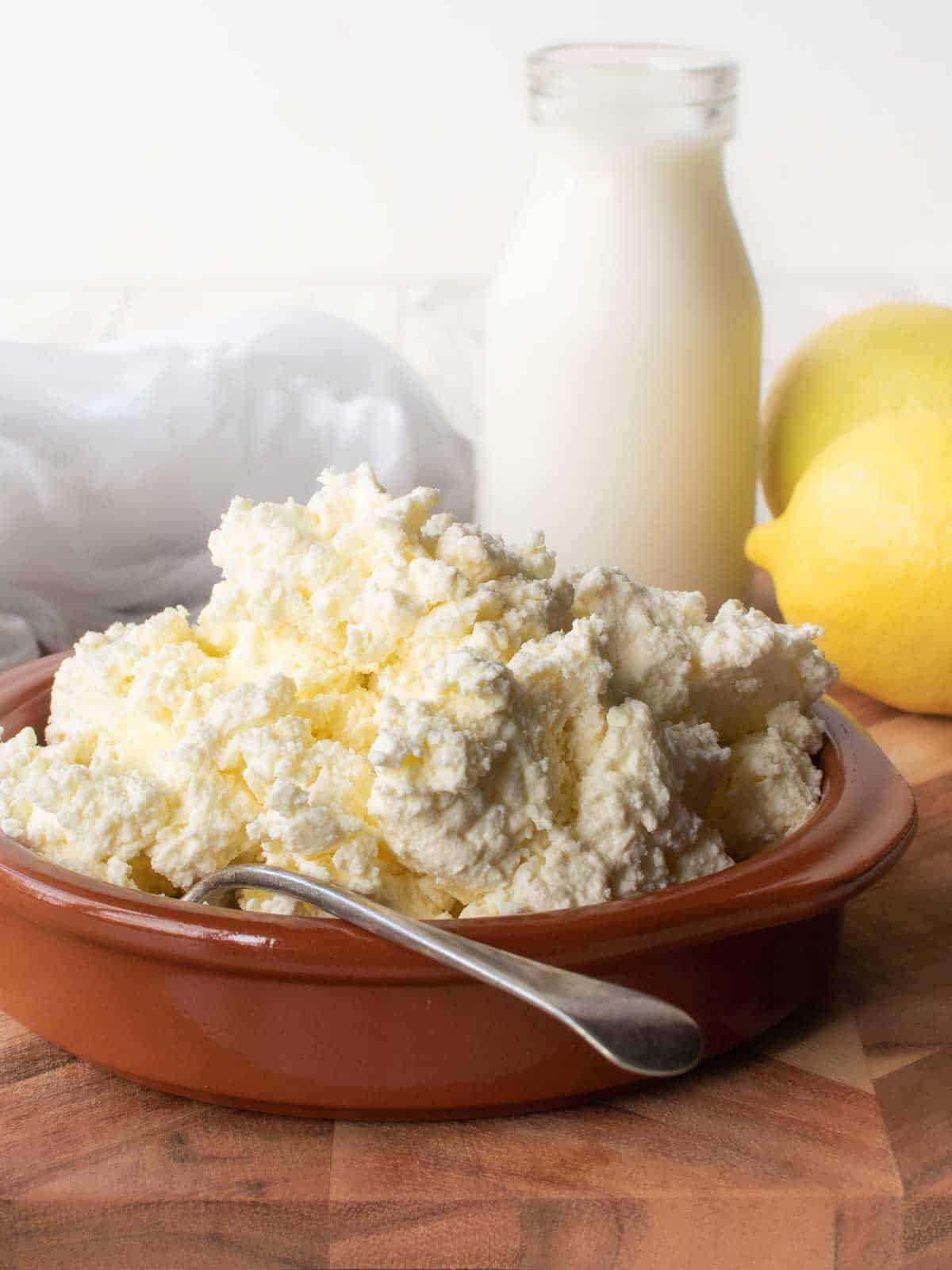
Fresh ricotta cheese is so versatile and I have so many recipes using ricotta like ricotta cavatelli, fried sfingi, spinach ricotta ravioli, and Sicilian cheesecake just to name a few. But the beauty of homemade ricotta cheese is that you have the pleasure of eating it warm, as soon as it’s ready. Just spread it on fresh bread, on crackers, or simply spoon the warm homemade ricotta cheese into a bowl, with just a drizzle of honey, it’s perfect!
Cheesemakers learned how to make ricotta cheese as a by-product of the cheese-making process. Ricotta is Italian for ‘recooked’ or ‘twice cooked’ and in fact, was traditionally made from leftover whey. A little milk was added to the leftover whey and then reheated to make fresh whey ricotta cheese. Today much of the ricotta cheese is made from whole milk similar to this recipe.
Why you’ll love this recipe
- Fresh – you won’t get anything fresher than homemade cheese and you’ll really notice the difference. By choosing a good quality dairy, you have control over the finished product. Whether it’s Italian Ricotta Cheese, German Homemade Quark, or other fresh cheese recipes, the best quality dairy is important.
- Creamy – by making your homemade ricotta cheese, you get to customize the texture and make it as moist or thick as you like.
- Flavorful – homemade ricotta cheese is more flavorsome than the store-bought variety because you have complete control over the quality of ingredients. High-quality ingredients result in a better more flavorful ricotta cheese which is ideal for these Lemony Ricotta Cookies and my Lemon and Ricotta Cake.
For complete ingredient quantities and full instructions, please scroll to the printable recipe card at the bottom of the page.
Ingredients
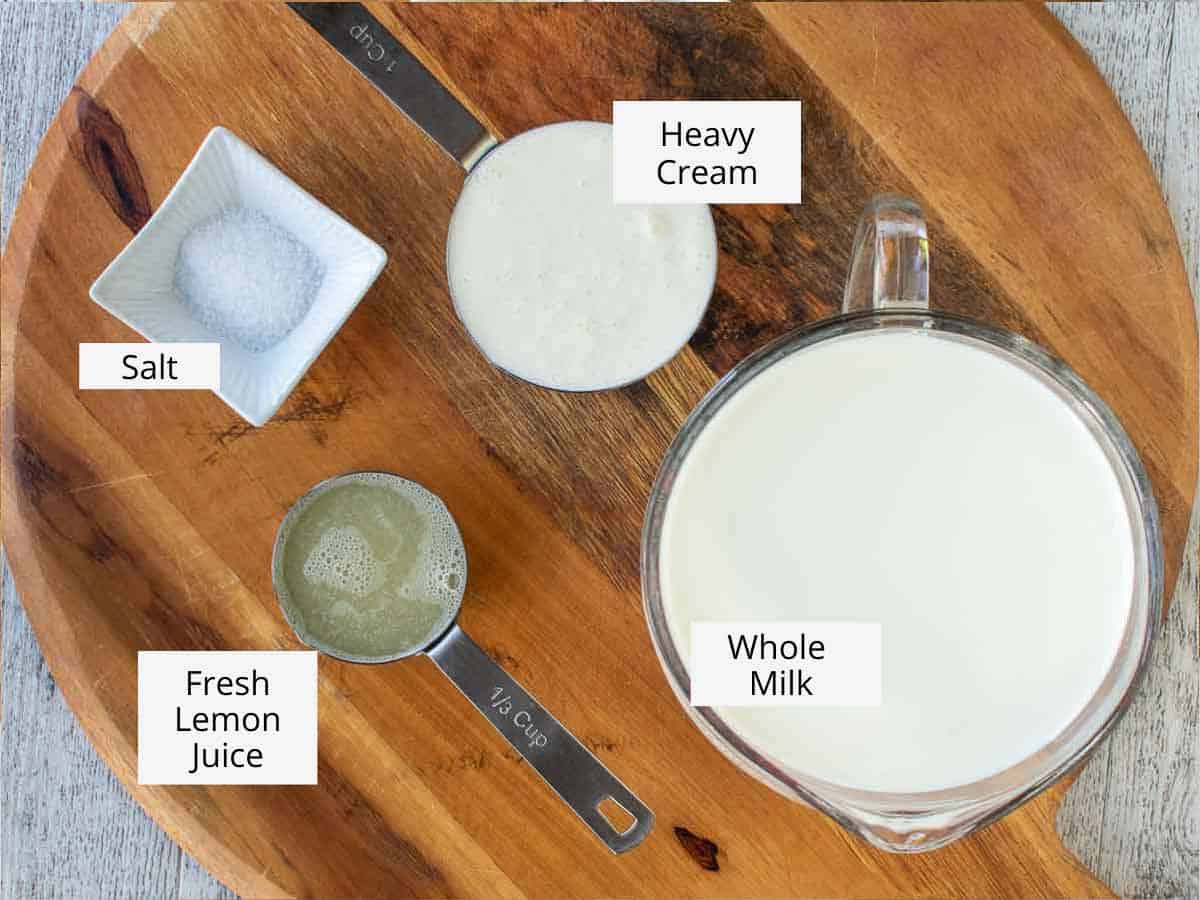
- Whole milk – pasteurized milk is perfectly fine to use. The better the quality the better the ricotta. Lactose-free milk is suitable but ultra-pasteurized milk (UP) or ultra-high temperature milk (UHT) won’t work well.
- Cream – pure heavy cream with no additives is what you need for this recipe.
- Lemon Juice – use fresh lemon juice that has been strained so that it has no lemon pulp. Don’t use Meyer lemons because they don’t have enough acidity.
- Salt – any non-iodized salt will be fine to make ricotta cheese.
See recipe card for quantities.
Instructions
Line a colander with dampened cheesecloth and sit it over a large bowl or saucepan if you want to keep the whey. We’ll talk about what you can do with the whey a bit later.
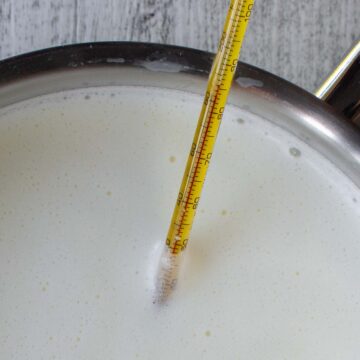
Heat the milk, cream and salt in a large saucepan over medium heat until 185ºF/85ºC. Stir regularly so that the milk doesn’t scorch.
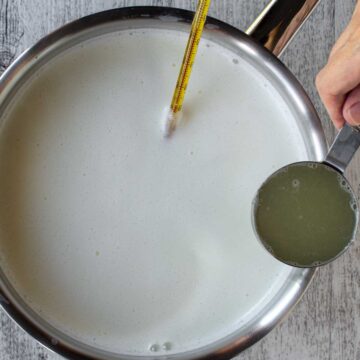
Add in the lemon juice and whisk briefly to combine.
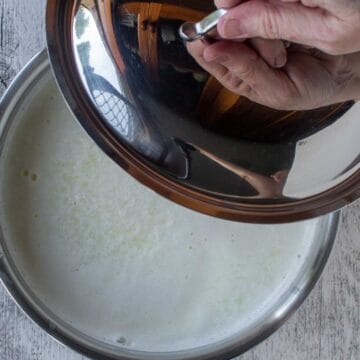
Turn the heat off and immediately place the lid on. Allow it to sit for 20 minutes.
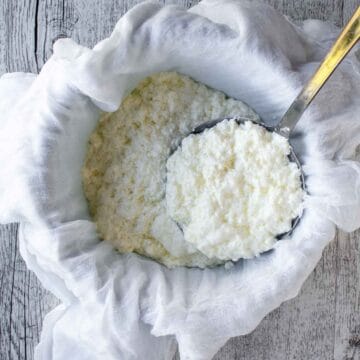
The curds will have formed and separated from the whey. Scoop the ricotta cheese into the cheesecloth-lined sieve.
Ricotta cheese can be eaten immediately while still moist and creamy or drained for 3 hours or overnight for a drier cheese. Put it in the fridge to drain.
Marcellina’s Hint: Be patient when heating the milk and cream. It will take some time to come to temperature but don’t be tempted to turn up the heat to hurry it along. Stir regularly so that the milk doesn’t scorch.
Substitutions
- Milk – use lactose-free milk instead.
- Cream – use lactose-free cream and milk to make this lactose-free ricotta cheese.
- Lemon juice – substitute white vinegar for the lemon juice for the same results. Alternatively, one teaspoon of citric acid dissolved in one tablespoon of water can be used.
Variations
- Light – omit the cream and replace with extra whole milk for a lighter variation
- Deluxe – substitute one cup of milk for an extra cup of cream for a richer, creamier version.
- Creamier or drier – for a creamier, softer ricotta cheese only drain for 20 minutes. Alternatively, if you need a drier, thicker ricotta, drain for 8 hours or overnight in the fridge.
Equipment
Before making homemade ricotta cheese, you’ll need to gather a few essential but not expensive pieces of equipment. A large saucepan is required that comfortably holds the milk and cream plus a wooden spoon or spatula to heat the milk and cream.
Invest in a thermometer. It’ll last forever and you’ll use it more often than you think. Once you learn how to make ricotta cheese, you may not need the thermometer. I still like to use it.
Finally, you’ll need a colander lined with cotton muslin cloth or cheesecloth which will allow you to strain the excess liquid without losing any curds.
Uses for Whey
The yellowish liquid that is left after you’ve scooped up the ricotta cheese curds is known as whey. It’s full of vitamins and minerals and has multiple uses. Instead of wasting the whey that is left after making homemade ricotta cheese, you can use it instead of water in recipes. Here are some uses for whey.
- Replace water with whey in pizza or bread dough.
- Use it instead of milk when making pancakes.
- Substitute it for milk when making creamy sauces.
- Use it to cook rice.
Storage
Store homemade ricotta cheese in a sealed container in the fridge for up to 3 days. Ricotta is a fresh cheese with a short shelf life. However, for longer storage, you can freeze ricotta cheese for up to two months. Read all the tips in my “Can you freeze ricotta cheese” article.
Top tip
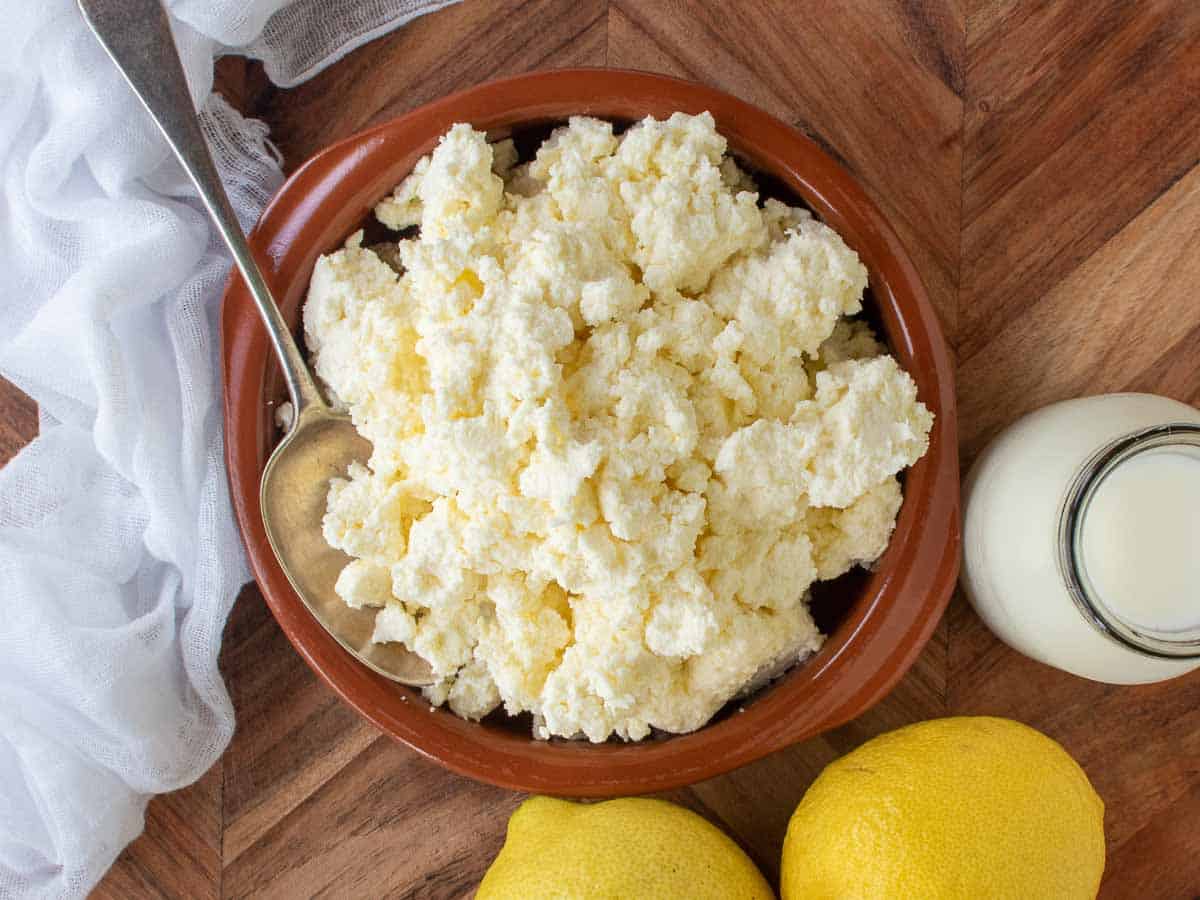
- Beginning with good-quality dairy is very important when making homemade ricotta cheese. You can add a little more cream for a creamier cheese or make it only with whole milk so that it’s not as rich. It’s your choice.
- Heat the milk and cream slowly and stir regularly to avoid scorching the dairy products. Be very attentive and don’t leave the milk and cream unattended. If the milk and cream catch on the bottom of the pan and scorch, the burnt flavor will spread throughout.
- After adding the lemon juice, stir to combine and turn off the heat immediately. Avoid agitating and continually stirring the mixture after adding the lemon juice. This can cause the ricotta to be rubbery and grainy. Overheating can also cause this.
FAQ
Including cream in the recipe will make homemade ricotta cheese creamy. Too much cream will make the ricotta heavy and not as fluffy. Not heating the milk and cream too quickly will keep the ricotta creamy.
Yes! Lactose-free milk and cream is perfectly fine to make ricotta cheese.
Definitely! This homemade ricotta recipe is so easy to make plus is tasty and luscious! It’s worth making because you can control the texture – drain it for longer if you want thick ricotta or keep it moist if that’s what you’re after.
Serving suggestions
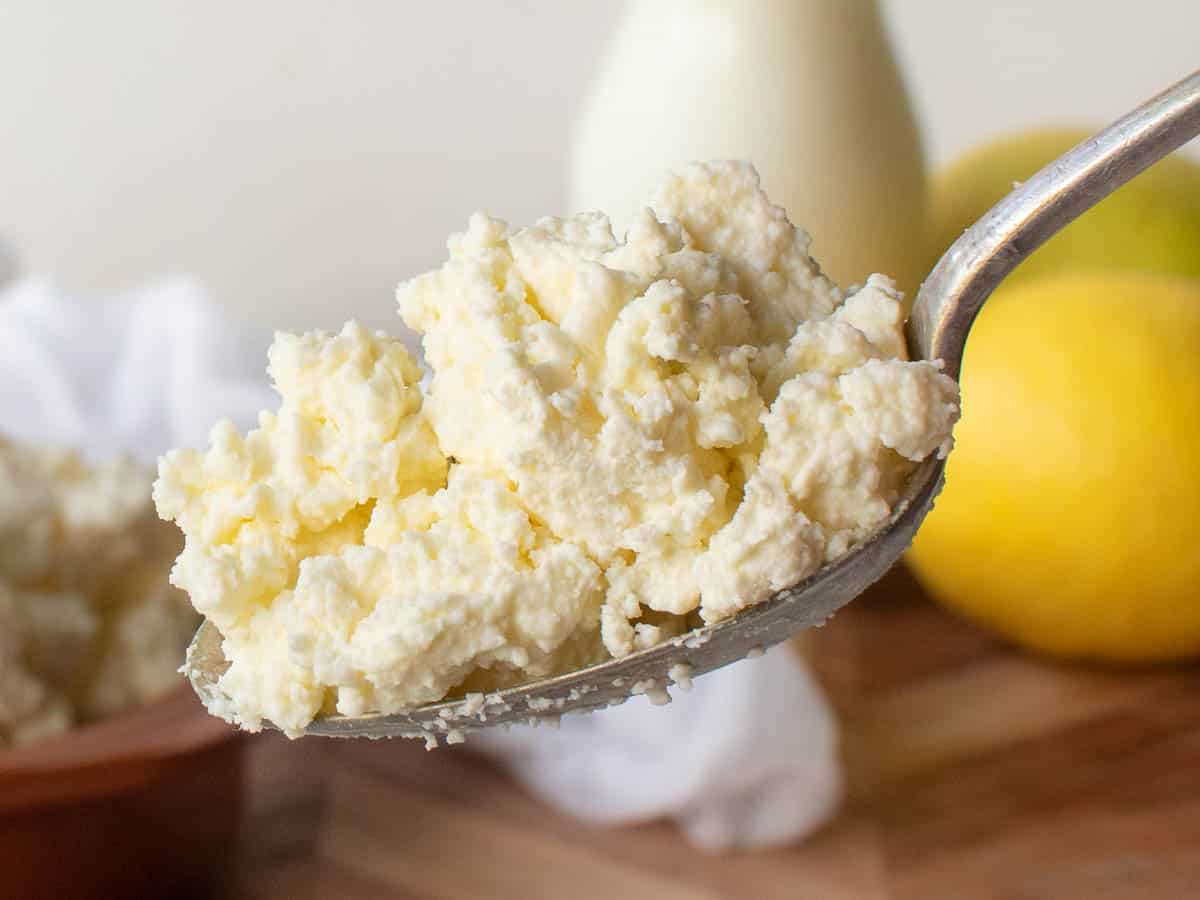
Once you know how to make ricotta cheese you’ll never go back to store-bought again! Use it to fill Eggplant Involtini or for your Easter Pizza Gaina. Homemade ricotta cheese makes an excellent Ricotta Pie and makes a luscious Cannoli Cake. In fact, it’s so flavorsome that you’ll want it for breakfast, lunch, and dinner!
Made this recipe?
Please let me know if you liked it by leaving a ★★★★★ star rating and a review below. And remember to subscribe to my newsletter – it’s free!
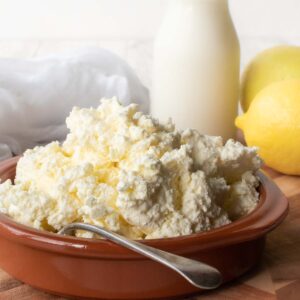
Homemade Ricotta Cheese Recipe
Equipment
- 1 Large saucepan
- 1 Wooden spoon or rubber spatula
- 1 Thermometer
- Cheesecloth
- 1 Colander
- 1 large bowl
Ingredients
- 9 cups (2160ml) whole milk
- 1 cup (240ml) heavy cream
- ⅓ cup (80ml) lemon juice
- 1 teaspoon salt
Instructions
- Combine the milk, cream and salt in a large saucepan. Heat milk and cream mixture over medium heat until 185ºF/85ºC. It should be steaming and frothy on the top and just before boiling point. Stir regularly so that the milk doesn’t scorch.
- Whisk in the lemon juice. Turn the heat off and immediately place the lid on. Allow it to sit for 20 minutes.
- After 20 minutes, the curds will form. Scoop the ricotta cheese into a cheesecloth lined colander which has be set over a large bowl or saucepan.
- Ricotta cheese can be eaten immediately in a creamy state or drain for 3 hours or overnight for a drier cheese. Put it in the fridge to drain. Makes about 1 ½ pounds or 680 grams.
Notes
- Use good quality dairy products.
- Heat the milk and cream slowly and stir regularly to avoid scorching.
- Use a thermometer to avoid overheating.
- Don’t stir the mixture continually after adding the lemon juice or the ricotta could become rubbery and grainy.
Nutritional Estimate Per Serving
Nutritional Disclaimer
Nutritional information is an estimate provided by an online nutrition calculator. For accurate results, it is recommended that the nutritional information be calculated based on the ingredients and brands you use.


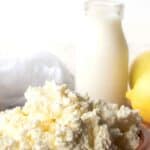
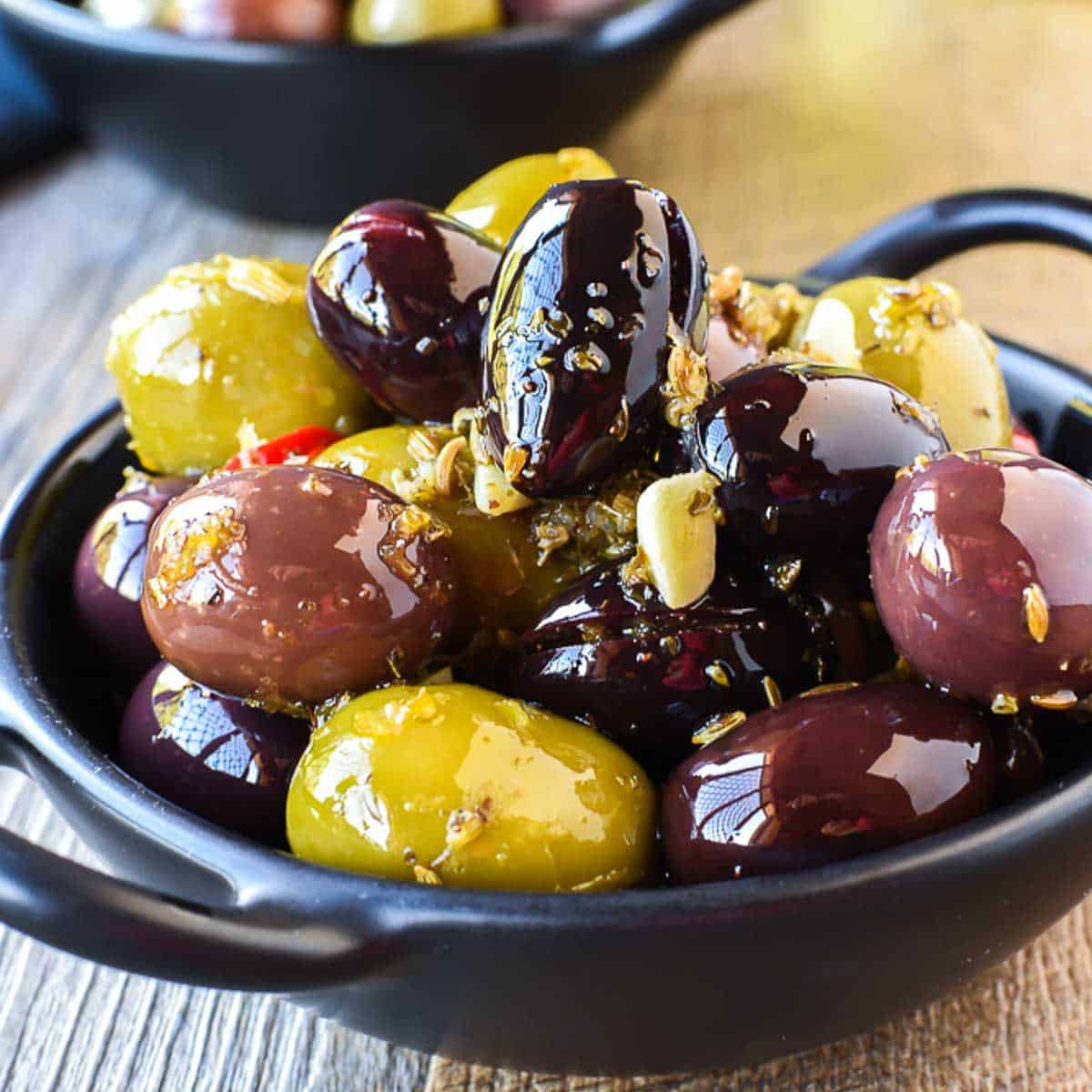
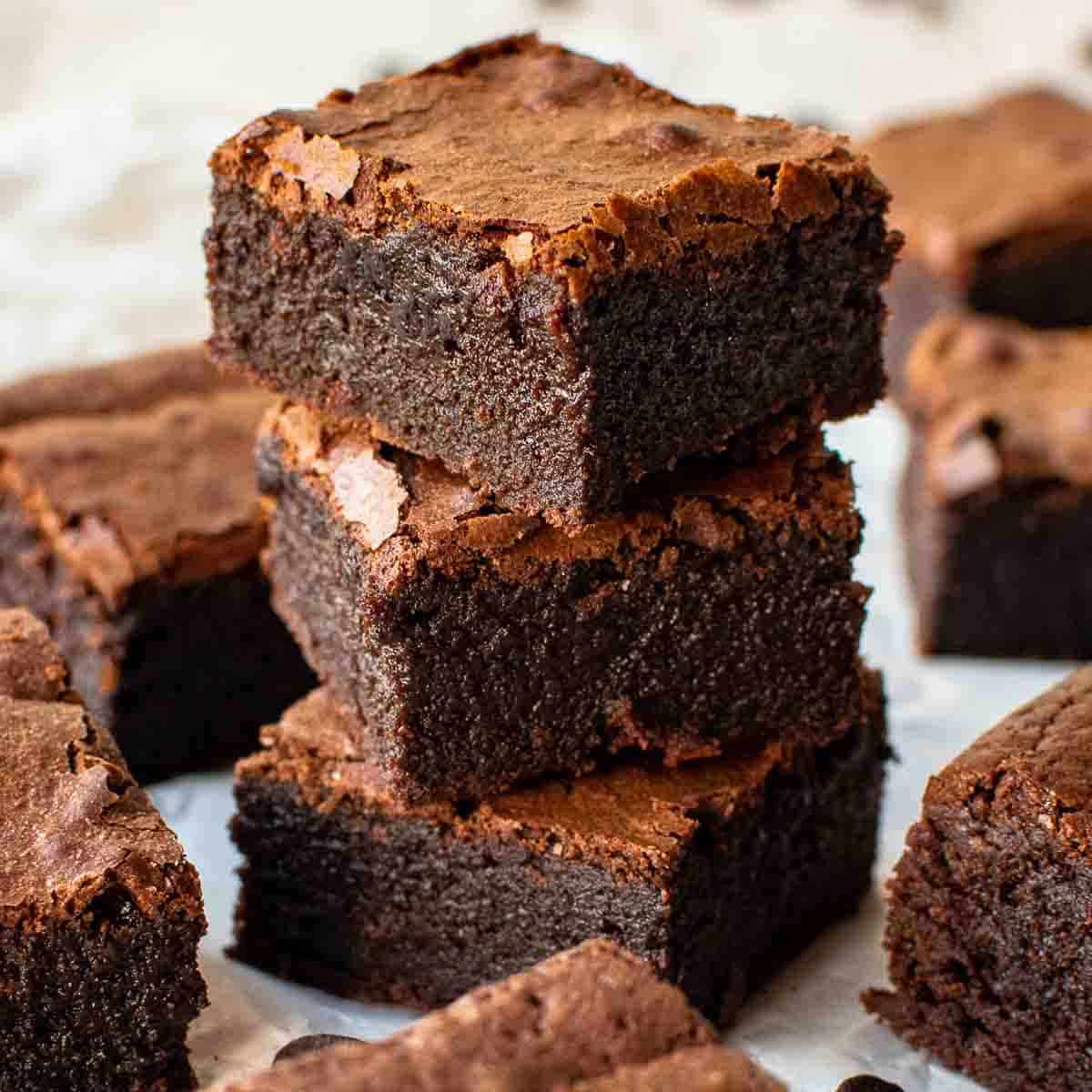
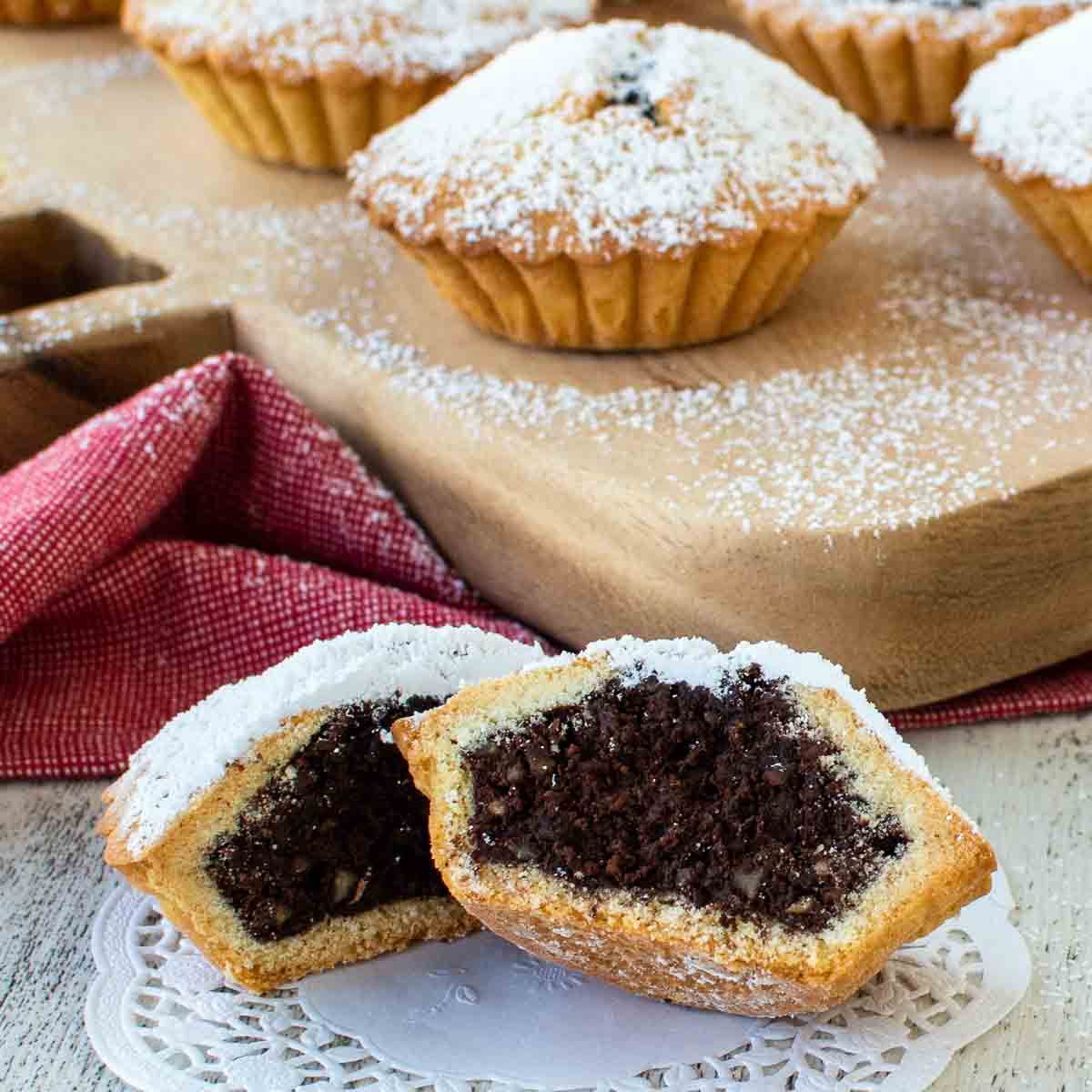
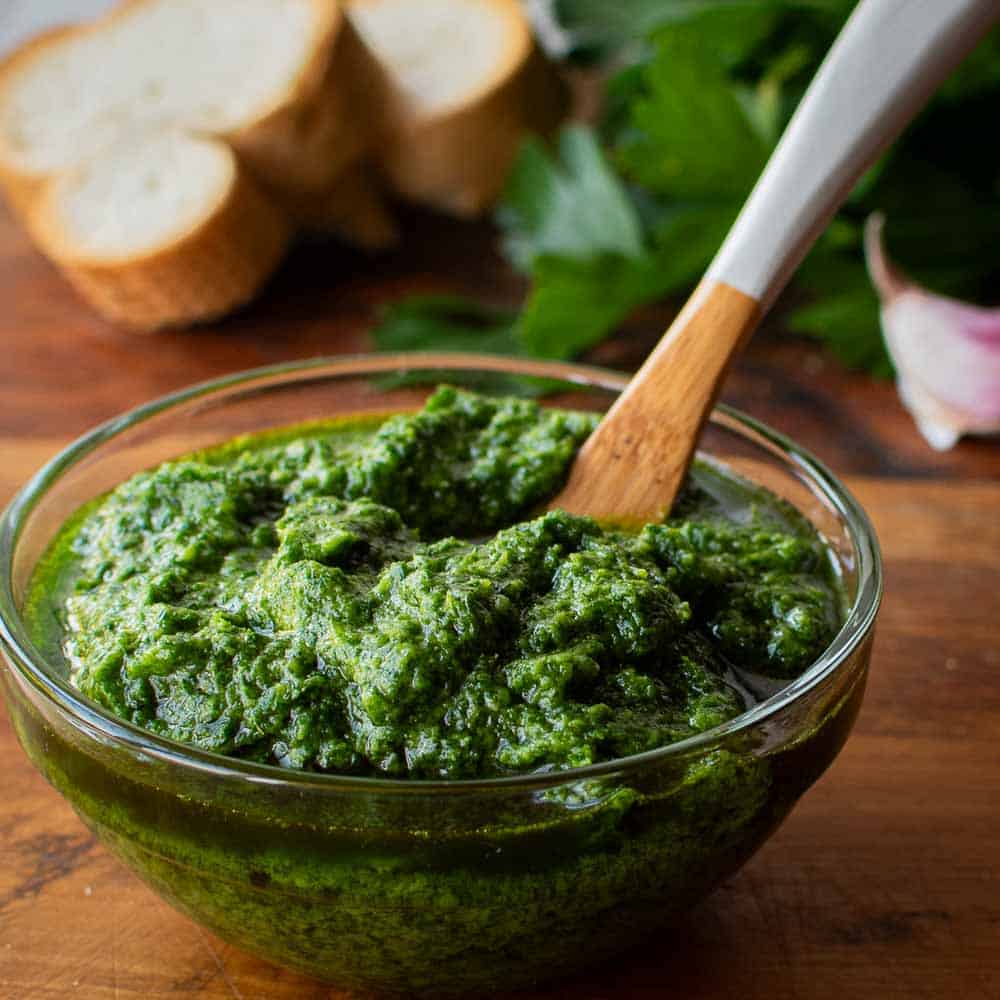

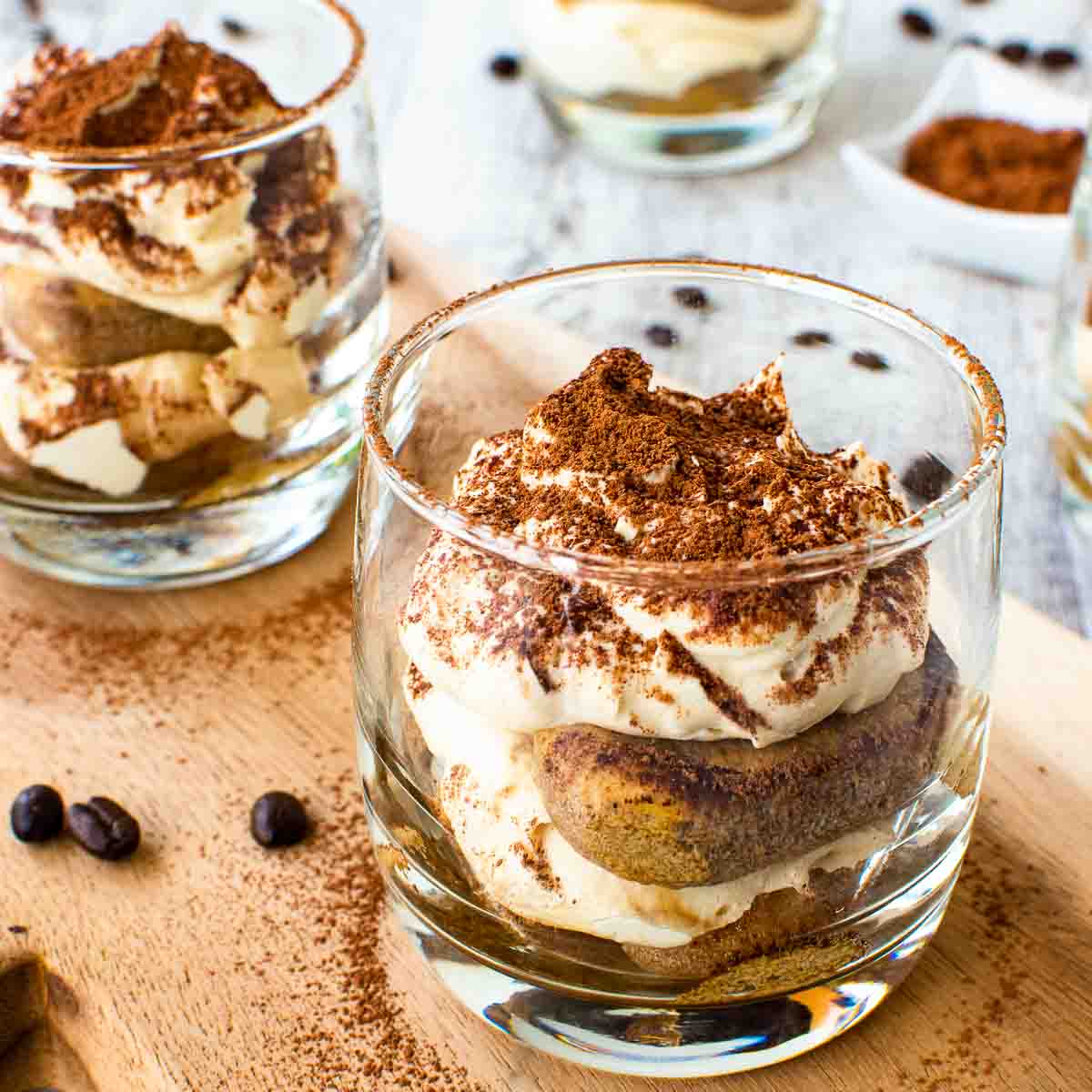
This is the best and creamiest recipe for making homemade Ricotta I have ever made. I love Marcellina’s recipes and will continue to use for years to come. Thank you for sharing.
Pat, I’m thrilled that you love my recipe for homemade ricotta. Thank you for taking the time to comment!
Can you please offer ML Litres as well as cup measurements.
There are so many cup sizes ( like bras!!!)
I have no idea what 9 cups are.
Thank you so much
From a European who loves your recipes
Sure, Georgia! I’ll get add that in right now. Yes…many cup sizes (haha). Luckily most of my recipes work even if it’s a little out but I understand that you would like the metric measurements. Lovely to hear from you!
Good Afternoon Marcellina, I am planning on making your Cannoli Cake this coming Monday/Tuesday, will the recipe for making the home made Ricotta yield the same amount of Cheese as the recipe for the Cannoli Cake that requires a 2 lb tub of Ricotta or 3 1/2 cups.. If I make the fresh Ricotta. Or do I need to multiply the ingredients? Also mentioned was the use of whole milk /heavy cream proportions. I have access to purchasing Raw Milk as I live in an agricultural area where it is available. The regular whole milk I currently utilize is Organic Pasteurized milk. Would there be an advantage in doing so, flavor and or consistency wise with the Raw Milk ? Friends who will be imbibing my creation are all professional Chefs. Thank you , Linda
Ciao Linda, my homemade ricotta cheese recipe makes about 1 ½ pounds or 680 grams so you will have to increase the quantities. I have made ricotta with organic, full fat, pasteurized milk or regular full fat homogenized and pasteurized milk though never with raw milk. In saying that, I have read that raw milk makes fine ricotta but I can’t say whether it would be an advantage in doing so. Let me know if you have any other questions.
Will be making my own from now on, so easy and tasty!
So glad you love it, Madeline!
Beautiful just like ricotta di casa you buy at the deli.